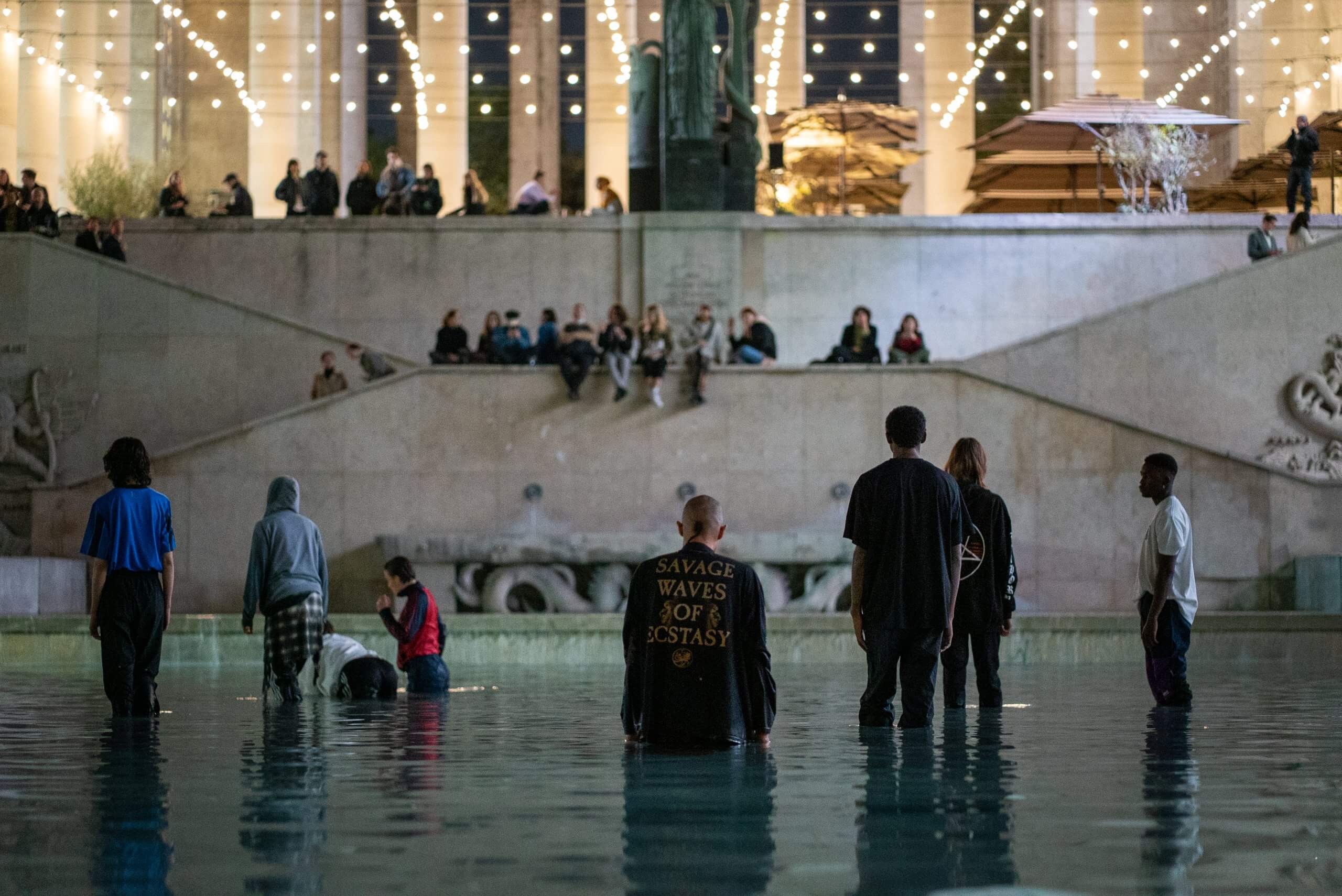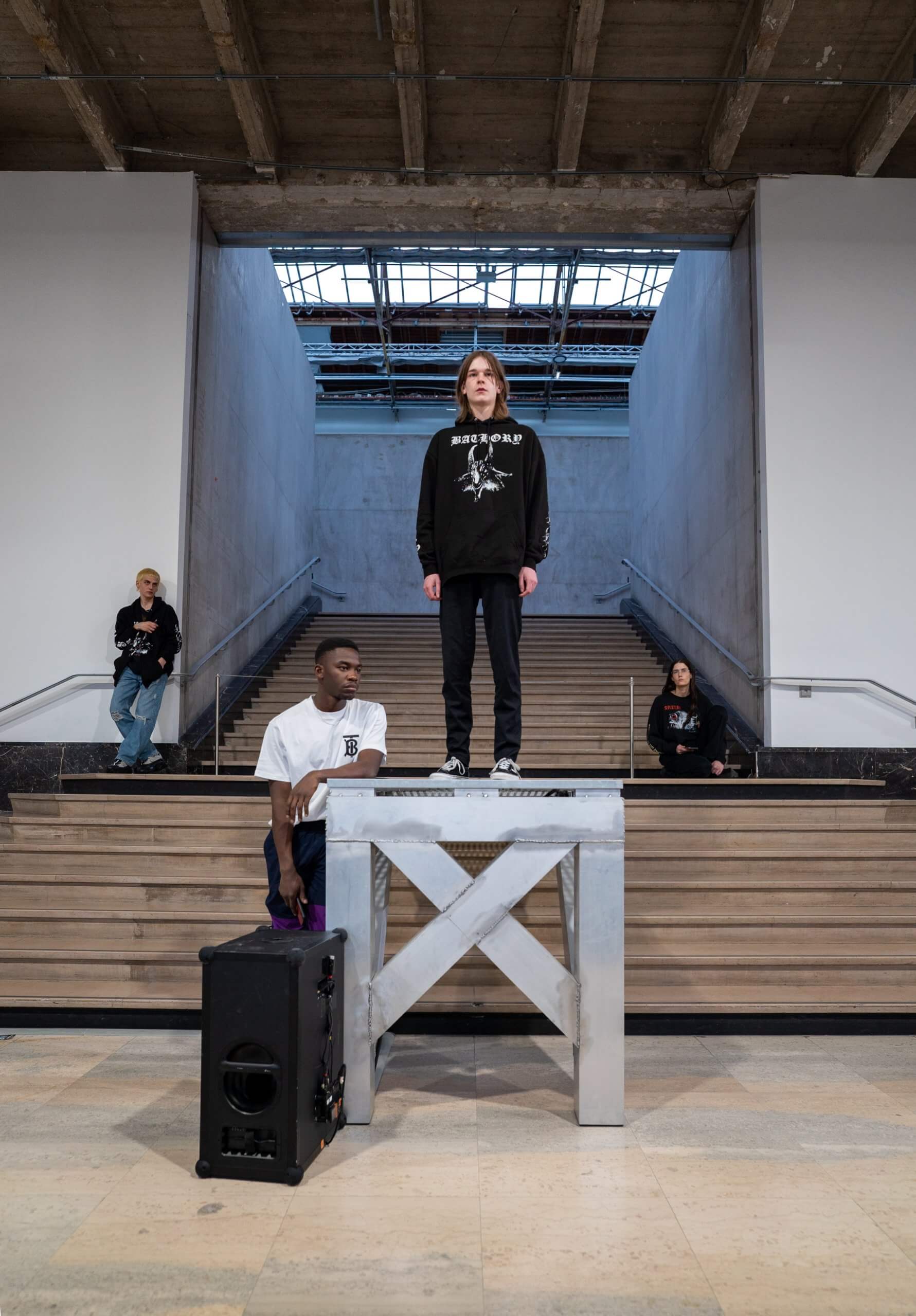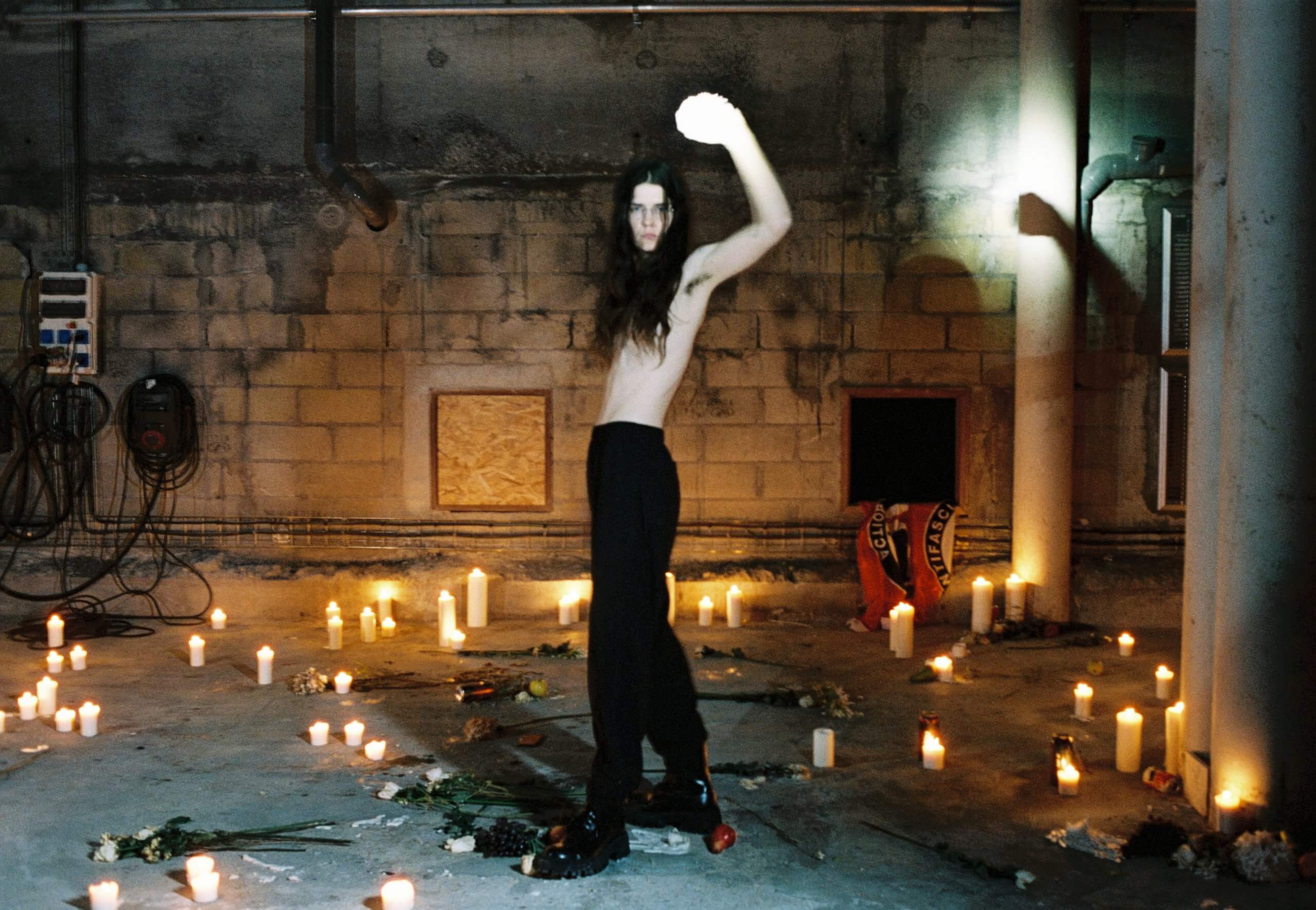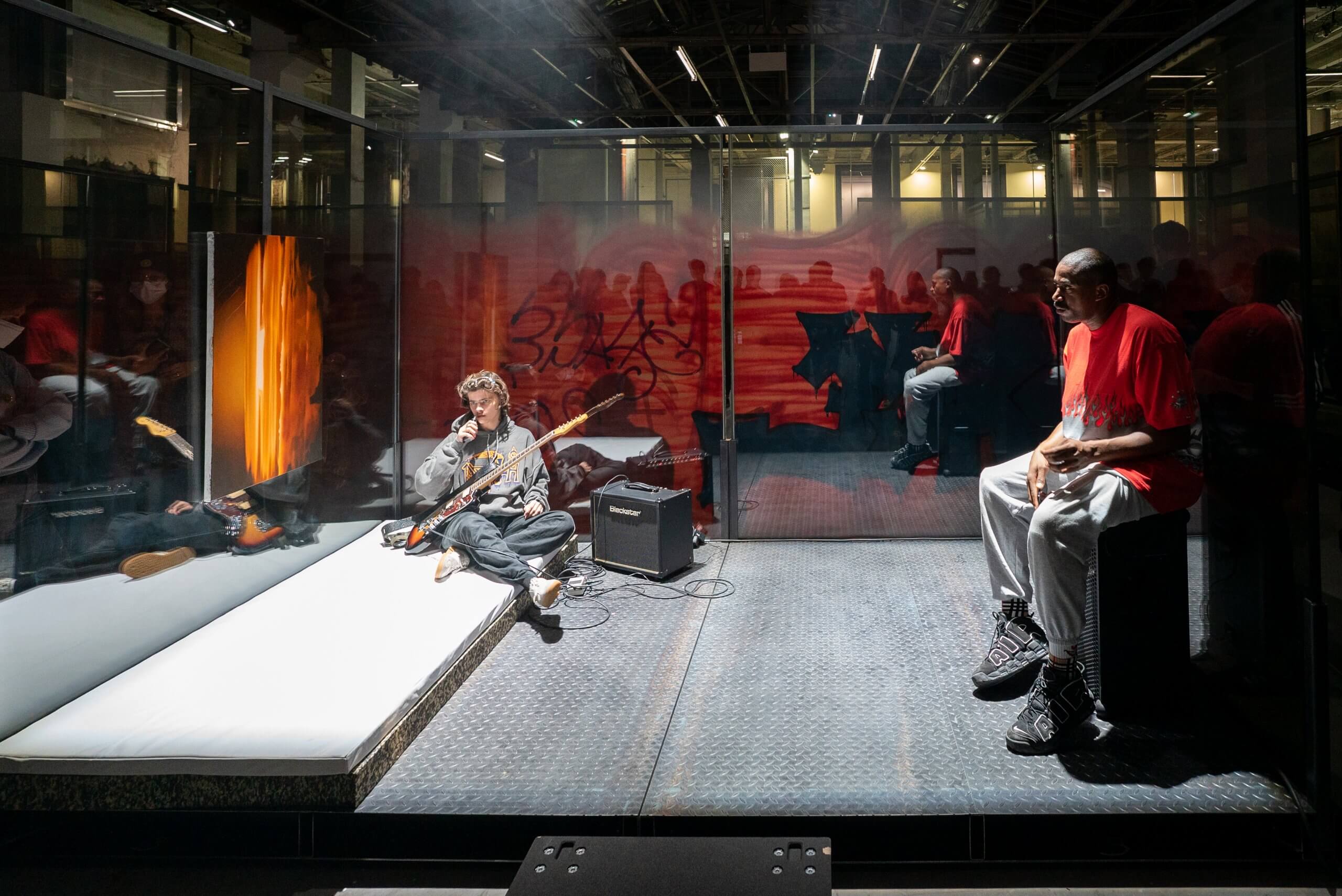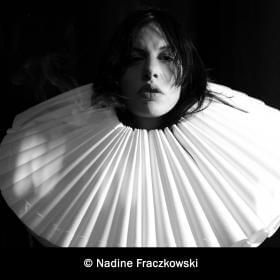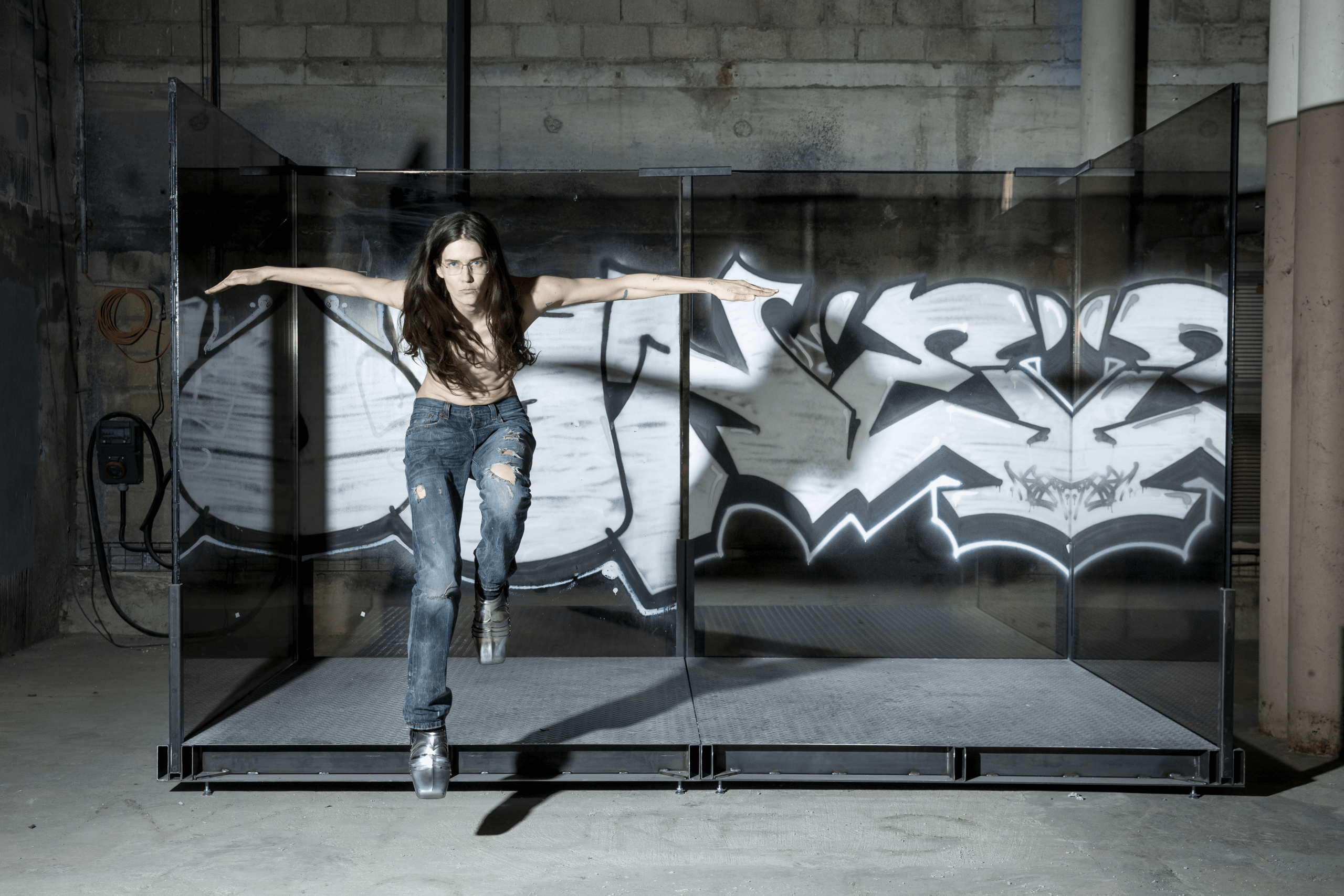SEARCH THE ENTIRE SITE
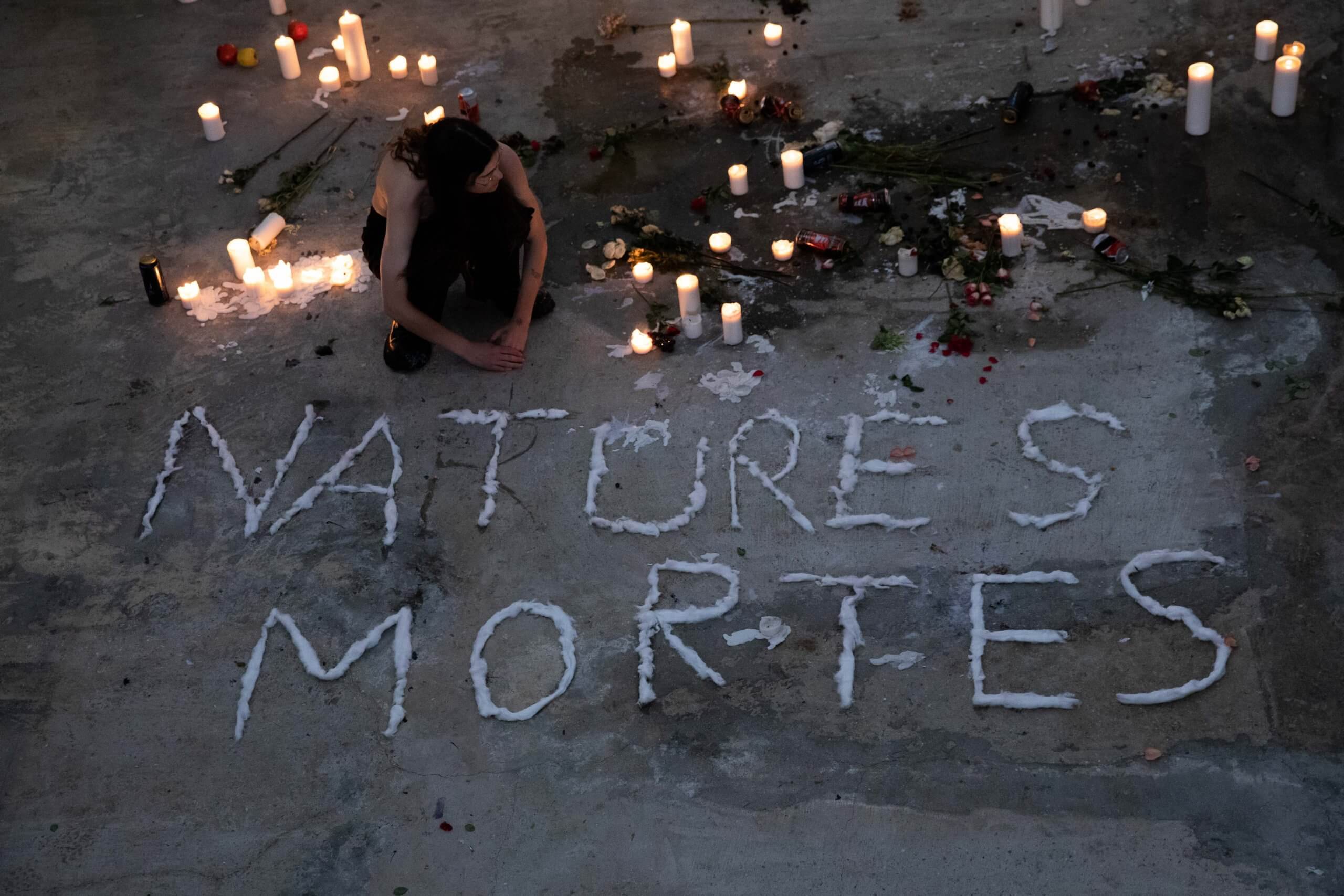
Anne Imhof, Natures Mortes : performance
From 14/10/21 to 18/10/21 and from 21/10/21 to 24/10/21 From 6 to 10 pmAfter having taken over the entirety of the Palais de Tokyo for the creation of the first act of Natures Mortes, her polyphonic, total work of art that fuses space, music, painting, and her own works as well as those of some thirty guest artists, Anne Imhof, who was awarded the Golden Lion at the 2017 Venice Biennial for her opera Faust, proposes a new performance work that captures the pulsations of the fleeting cycle of life and the burning intensity of the present.
These natures mortes – still lifes – serve as memento mori for the here and now and invite us to wander through the interval between the living and the non-living, between shadow and light, past and present, immobility and action, intensity and disillusionment. The performative dimension of Anne Imhof’s oeuvre runs throughout the exhibition, the works of art, the sound pieces, the architecture and the bodies present within it, and enters into symbiosis with the space itself. Even when emptied of human presence and devoid of any spectacle, the first act of the exhibition offers a negative portrait of absent bodies and the traces of their presence, making their voices echo endlessly throughout the space.
The suspension of the living and the spectral presence of bodies traced out through shadows, cries and melopoeia gather intensity as flows of liberated energy. The performers, long-term collaborators of Anne Imhof, take over the space. The Rooms offer intimate pauses, High Beds and Diving Boards enable bodies to rest before dancing a pas de deux once again, and identities dissolve. Here are ritual processions for a new age, flights where the frontiers between interior spaces and the street are rendered obsolete. The exhibition space, the interior street, and the labyrinth impose their own intrinsic rhythms, channeling bodies and inviting them to slow down, whereas the curved spaces act as race tracks that suggest movement and speed. The rotunda delimits a circular space, a rallying point akin to a crossroads where bodies might gather. Surrounded by Paddings, sculptural accessories that wrap the columns like the limbs of a body preparing themselves for a combat in the ring, they recall one of Anne Imhof’s first performances, a boxing match in a strip club in Frankfurt. The space constitutes an open and mobile stage, where other portable stages can in turn be erected and reconfigured as the performers move about. As if animated by the urgency of uprisings to come, bodies gather, blend and collide with one another, before dispersing and escaping, generating new images each instant.
The entirety of the vast organism that is the Palais de Tokyo enters into play, metamorphosing and moving with the alternately centrifugal and centripetal flows generated by these bodies in motion.
“During the performances, the different rooms become a sort of heterotopia, a space of art that blends with a space of dreaming, where everything is transformed into décor and staging.” Anne Imhof
Performers of the Core Team
Since 2012, Anne Imhof has surrounded herself with a group of close collaborators, in particular Eliza Douglas, a number of whose paintings are presented in the exhibition; Imhof and Douglas also jointly composed the sound and performance works in the exhibition. The core team of collaborators come from various backgrounds, their diversity allowing for each new piece to be approached from multiple perspectives. Whether dancers, models, philosophers, musicians, or composers, each collaborator brings to the work their own world and their own aesthetic. Together, they rehearse the sequences of movements, each of which is planned down to the slightest detail, and each of which allows for their personalities and sensibilities to be brought together within a framework that makes possible an ongoing dialogue with Imhof. Over the course of the performance, the artist sends instructions via WhatsApp to her group of performers, allowing them to adapt to the dynamics of the spectators present, who in turn become part of the constructed image.
